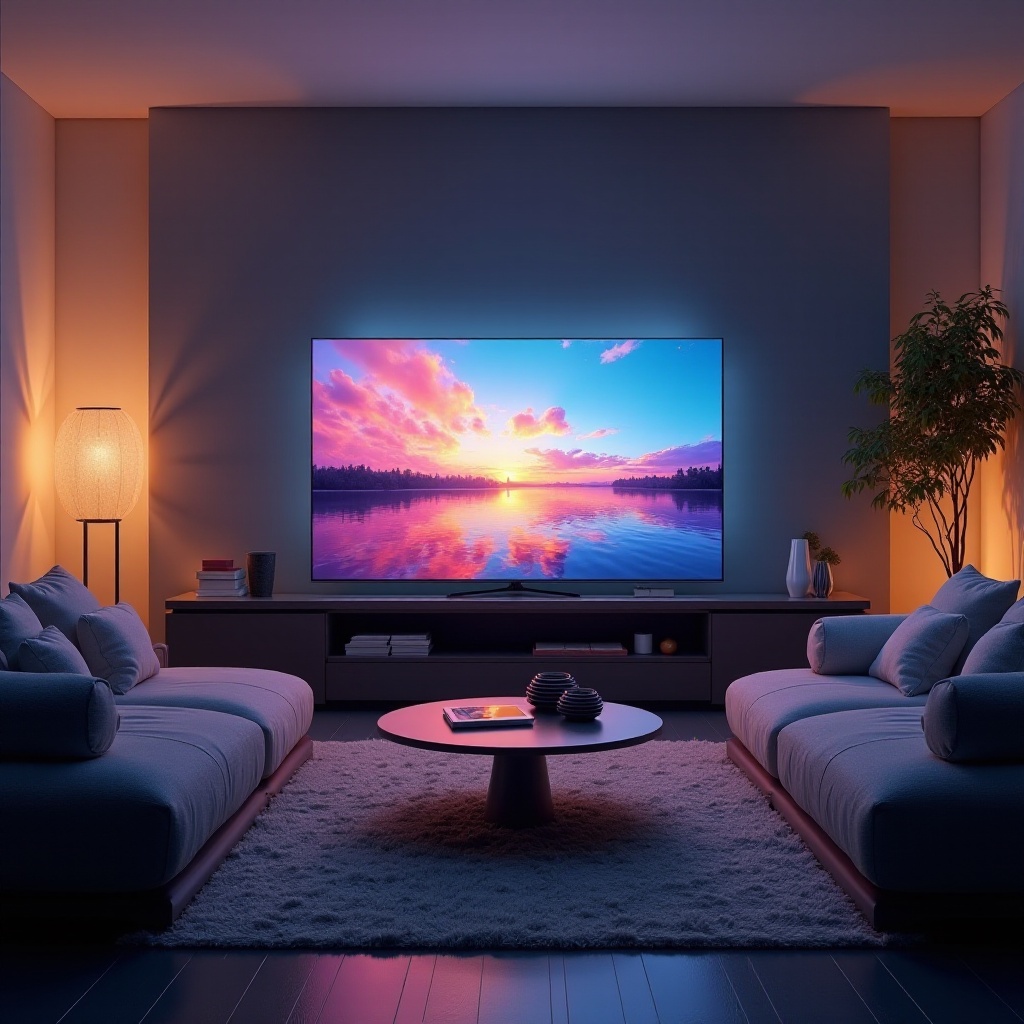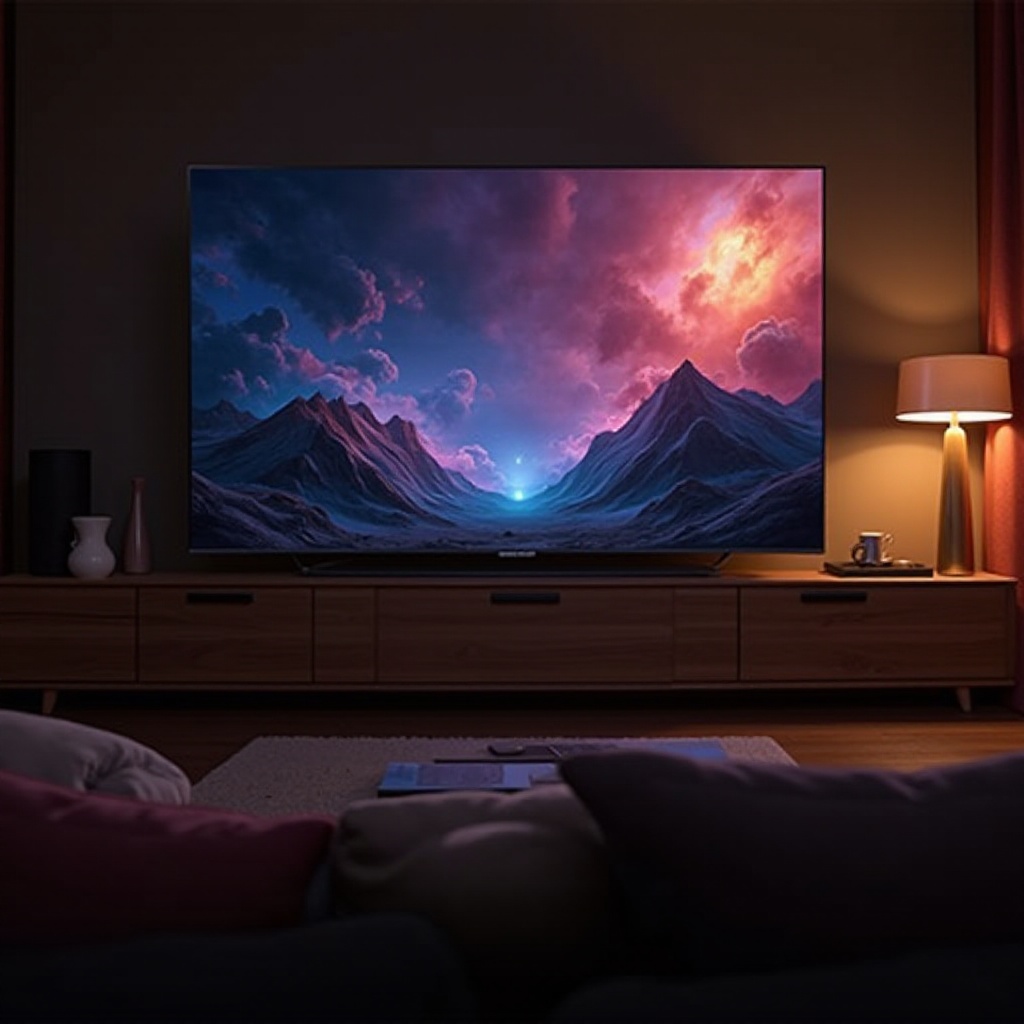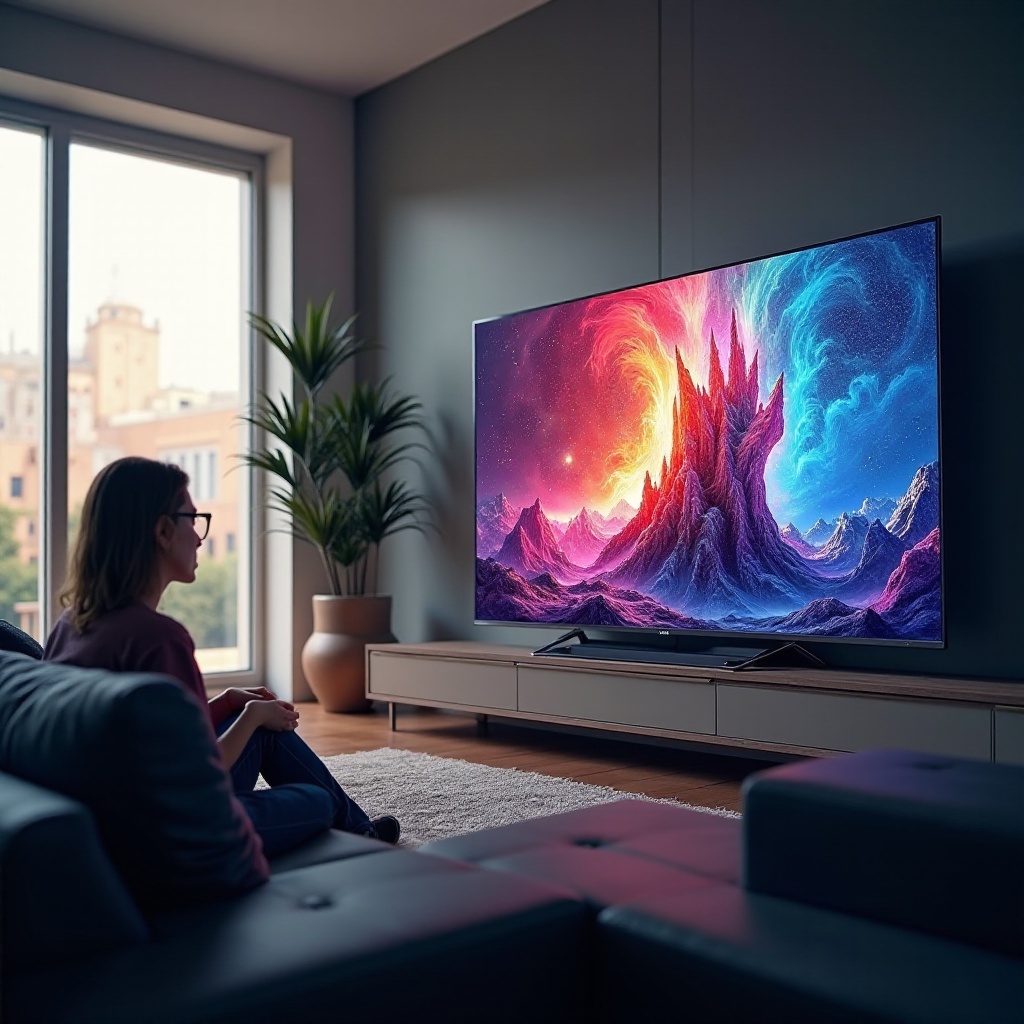Introduction
To experience the best on your Samsung TV, mastering HDR settings is essential. High Dynamic Range (HDR) transforms viewing quality by improving brightness, contrast, and color accuracy, making every scene more vivid and lifelike. Understanding how your specific Samsung TV model interprets HDR signals is the key to optimizing your experience, whether for a blockbuster movie or binge-watching a new TV series. By mastering your Samsung TV’s HDR settings, you can elevate your viewing experience to new heights.

Understanding HDR on Samsung TVs
HDR technology enables a broader spectrum of colors and contrasts, leading to more vibrant images. Samsung TVs utilize this technology to enhance both bright and dark scenes, providing breathtaking visuals when properly set. However, each Samsung TV model may handle HDR differently, so understanding your model’s specific HDR capabilities is critical. This understanding will help you set up your HDR settings for an unparalleled entertainment experience, seamlessly connecting your expectations with reality.
Setting Up HDR on Your Samsung TV
Verifying HDR Compatibility
Before adjusting any settings, ensure your Samsung TV supports HDR. You can verify this by reviewing the user manual or Samsung website for your model’s specifications. Look for HDR labels such as HDR10 or Dolby Vision, which indicate compatibility. Ensuring your TV’s compatibility is the foundational step toward achieving the desired visual quality.
Enabling HDR on Different Samsung Models
Once you have confirmed HDR compatibility, the next step is to enable the HDR function:
- Navigate to Settings: Press the Home button on your remote, then select Settings.
- Access Picture Settings: Navigate to Picture > Expert Settings.
- Enable HDR+: Toggle the HDR+ setting to ‘On’.
In some Samsung models, these options may be located in slightly different menus, so consulting your user manual for model-specific instructions can be beneficial. With HDR enabled, you’re on your way to optimizing your viewing experience.

Optimizing Picture Modes for HDR Content
Choosing the Right Picture Mode
Samsung TVs offer various picture modes tailored to different types of content. For HDR content, the Movie or Standard modes often provide the best results:
- Movie Mode: Calibrated for a more cinematic experience, perfect for films.
- Standard Mode: Offers a balanced setting, making it a versatile choice for daily content.
Customizing HDR Settings for Different Content Types
Each content type may require you to tweak HDR settings to get the best possible picture quality:
- Movies: A slight increase in color tone and contrast can deliver a more cinematic feel.
- Games: Opt for a higher refresh rate and adjust motion settings to minimize lag and maintain clarity.
Such adjustments ensure the optimal quality of every type of content you choose to enjoy.
Advanced HDR Settings and Adjustments
Fine-Tuning Brightness and Contrast
Finding the perfect HDR setting involves meticulously adjusting brightness and contrast. Properly balanced settings preserve detail and enhance the overall clarity:
- Brightness: Lower slightly to keep shadow details crisp.
- Contrast: Increase for deeper colors and better depth.
Once you achieve the right balance, the viewing experience should match your viewing environment, providing greater satisfaction.
Adjusting Color and Sharpness for HDR
For high-quality viewing, precise color and sharpness adjustments are equally essential:
- Color: Adjust using a Warm tone for natural skin tones.
- Sharpness: Carefully fine-tune to avoid overly soft or harsh images.
These adjustments play a significant role in enhancing your HDR viewing and turning your entertainment into an immersive experience.
Troubleshooting Common HDR Issues
Fixing Brightness and Dimming Problems
HDR settings may sometimes cause brightness issues or unexpected dimming. Consider these solutions:
- Adjust Backlight: Increasing the backlight can resolve dim images.
- Local Dimming: Ensure that the local dimming setting is at its maximum to maintain image quality.
Addressing Color Discrepancies
If the colors don’t appear as intended, try these steps:
- Recalibrate: Navigate to Picture > Expert Settings > Reset Picture to recalibrate settings.
- Update Software: Keep your TV’s firmware updated to benefit from improved performance and bug fixes.

Conclusion
Mastering the HDR settings on your Samsung TV not only enhances your immediate viewing pleasure but also maximizes the potential of all your content. By learning and refining your TV’s HDR capabilities, you can ensure every scene is depicted as intended by its creators. With access to troubleshooting tips, fixing common HDR issues becomes hassle-free, leaving you to enjoy a seamless and vibrant viewing experience.
Frequently Asked Questions
How do I know if my Samsung TV supports HDR?
Check your TV’s user manual or Samsung’s official website for indicators like HDR10 or Dolby Vision in the product description.
Can I use HDR settings for all types of content?
While HDR settings optimize certain types of content, not all TV content benefits equally. For non-HDR content, consider using standard or dynamic modes.
What should I do if HDR looks too dark on my Samsung TV?
If HDR appears too dark, adjust the brightness and backlight settings, and ensure local dimming is properly configured to address dimming issues.